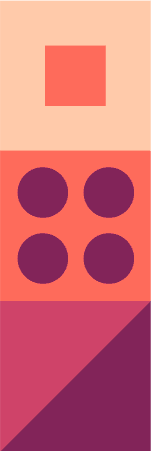Don’t Quota Me on This
Last year, when UN Women published that it will take close to 300 years to close the global gender gap, many of us working in the gender space sighed and got back to work. Though hopefully a wakeup call for those in power, the persistent backsliding on gender equality is an all-too-harsh reality of the democracy-threatened countries many of us live in, starting with the United States.


The article was originally published on Alliance Magazine on March 7, 2024.
So, when the Alliance editors asked us to comment on whether gender quotas should be implemented on foundation boards as part of the push for equality, we had to look at the question within a larger frame of how constructs of gender and power are playing out in the US right now. While we do believe that quotas mandating female representation within systems of power have been successful in political and corporate sectors, we do not believe they are the best path forward for philanthropy right now.
While gender quotas might get more women into board seats, they do not guarantee those women are treated with respect, nor whether they hold equal power to men in decision-making. The system of philanthropy is still wrapped in patriarchy where most wealth is made and held by older white men. Women’s ability to influence or even vote equally in grantmaking is often not commensurate with their representation on boards. In fact, quotas risk having the opposite effect – women who end up on boards because of mandates could be viewed as “diversity hires,” which can reduce their credibility, diminish their power, and lead to backlash.
With the current state of polarization in the US, where concepts of diversity, equity, and inclusion (DEI) are viewed as cultural battleground in many circles, we could easily see a large swath of people in power interpreting a gender quota as a direct form of discrimination against men. While this is not women’s problem to solve, it’s a reality that must be considered alongside any decisions related to quotas. As we have seen through recent Supreme Court rulings on abortion and affirmative action, mandates that were designed to protect bodily autonomy and repair centuries of injustice can be swiftly removed when white men’s power and control are threatened.
We also question the necessity of a debate about gender quotas specifically when there is such profound lack of diversity across other social identities in philanthropic governance structures. According to the National Center for Family Philanthropy’s 2020 national benchmark survey of over 500 family foundations, gender composition on family foundation boards skewed slightly toward males but was much closer to parity than what we see on large corporate boards. Fifty-five percent of board makeup was men and 45 percent women.
What stood out was that only 10 percent of foundation boards included LGBTQ and/or gender non-conforming members and two thirds of foundations did not have any people of color. Only one-third had millennial (born 1980-2000) board members. While two thirds included one non-family member, there is no data about whether those non-family members represent the communities that the foundations’ philanthropy aims to serve. Our guess is that very few do.
There is no doubt that typical private and family foundation boards require an overhaul when it comes to diversity, equity, and inclusion. And while we agree there is still room to improve when it comes to female representation on foundation boards, focusing only on women – which generally translates to a focus primarily on white, cisgender women – is too myopic at a time when we know that diversity of race, ethnicity, sexuality, age, experience, and perspective are so grossly missing the mark. To debate the merits of a quota for just one identity diminishes and distracts from a larger discussion about true diversity and intersectionality, while also threatening to set a false precedent of what is deemed “good enough” for representation and inclusion.
The question about gender quotas also feels out of step with what we see happening with wealth in the US. Women in power are driving greater inclusion and gender equality in the spaces they occupy. What is being called the “great wealth transfer” is underway, and between their pending inheritance and becoming more financially secure and savvy, affluent women are going to be taking the reins in financial, investment, and philanthropic decisions.
The Women’s Philanthropy Institute reports that women, especially high net wealth women, give away larger proportions of their wealth and are more likely to give to organizations supporting women and girls. Those that start businesses with their capital are more likely to hire women, pay them more, and put them in leadership positions (leading to better performing companies). They are more likely to align their investments with their values, invest for impact and financial return, and invest for positive climate impact.
At Maverick Collective, we work with over 50 women donors, the majority of whom are under 45 years old and recipients of this great wealth transfer. As they take on more leadership, they are, as Hilary Pearson and Laetitia Gill discuss in their article in this series, putting the internal pressure on their families and foundations to embrace diversity, equity, and inclusion; and that pressure can be much more effective and enforceable than what a regulation can do.
Instead of a narrow focus on representation, we need to focus foundations on inclusion and shifting power. More important than mandates are ensuring that we – as a wealth and philanthropy sector – are taking note of the ways women are already choosing to lead, and creating avenues for women and non-conforming people of different races, ages, backgrounds, and lived experiences to be fully engaged and heard in all of the powerful spaces within philanthropy.
Rather than enforcing policies that are hard to monitor and cause resentment, we should be equipping a new and diverse generation of philanthropic leaders with the knowledge, tools, and support to make their capital work for the greater good. Let’s ask ourselves how to create the environment within philanthropy that allows people of diverse backgrounds to thrive and breaks the cycle of inequality and tokenism for generations to come.



